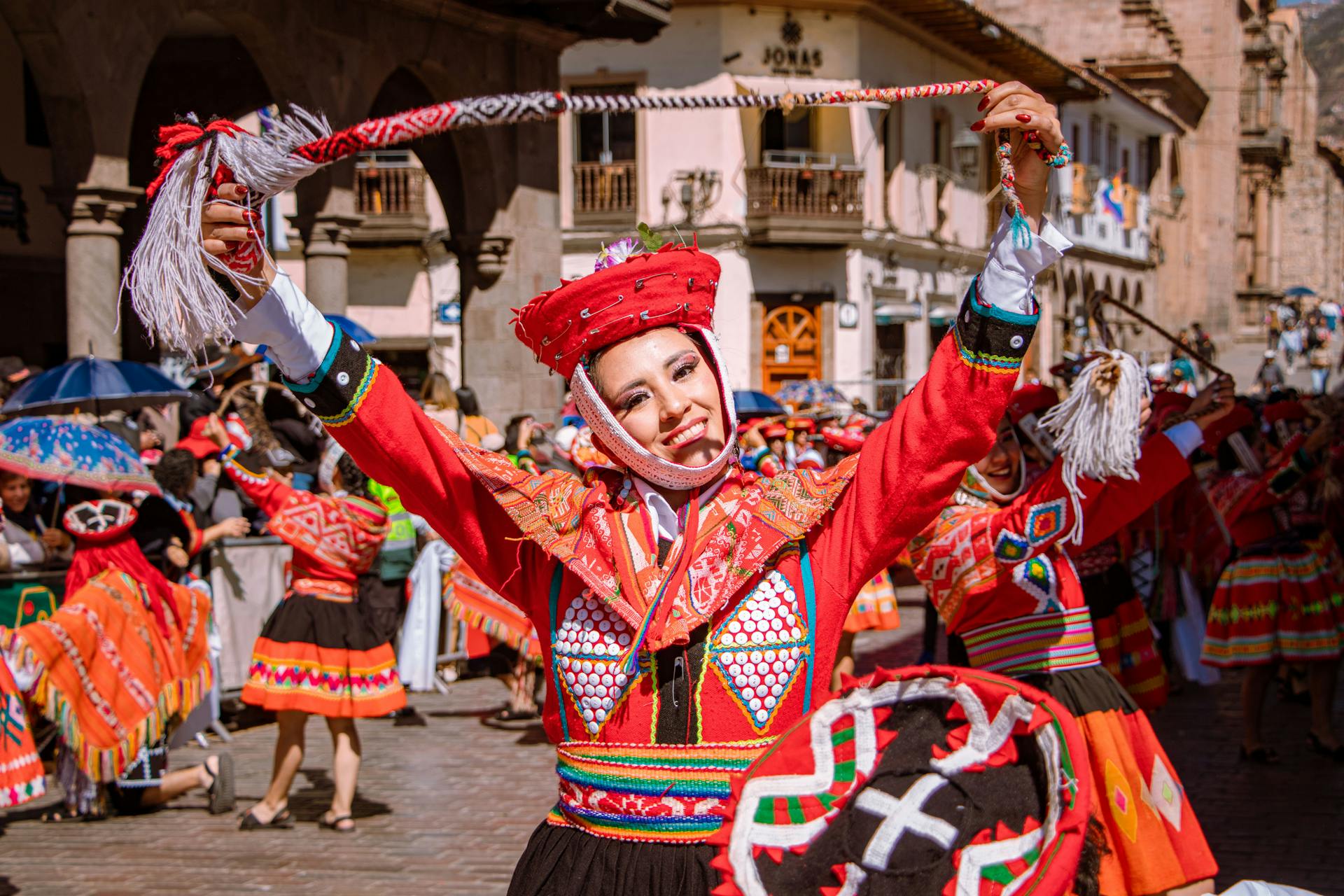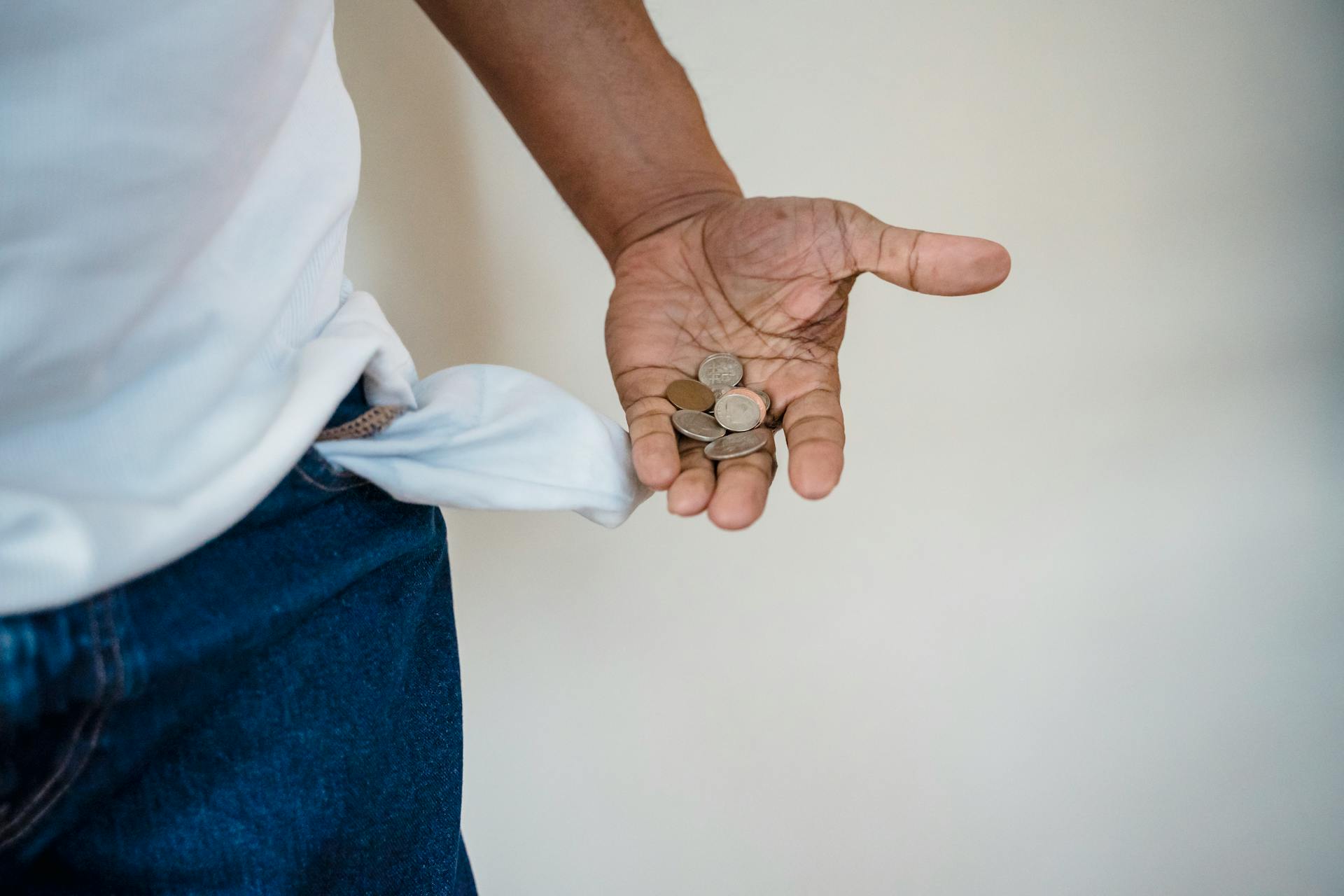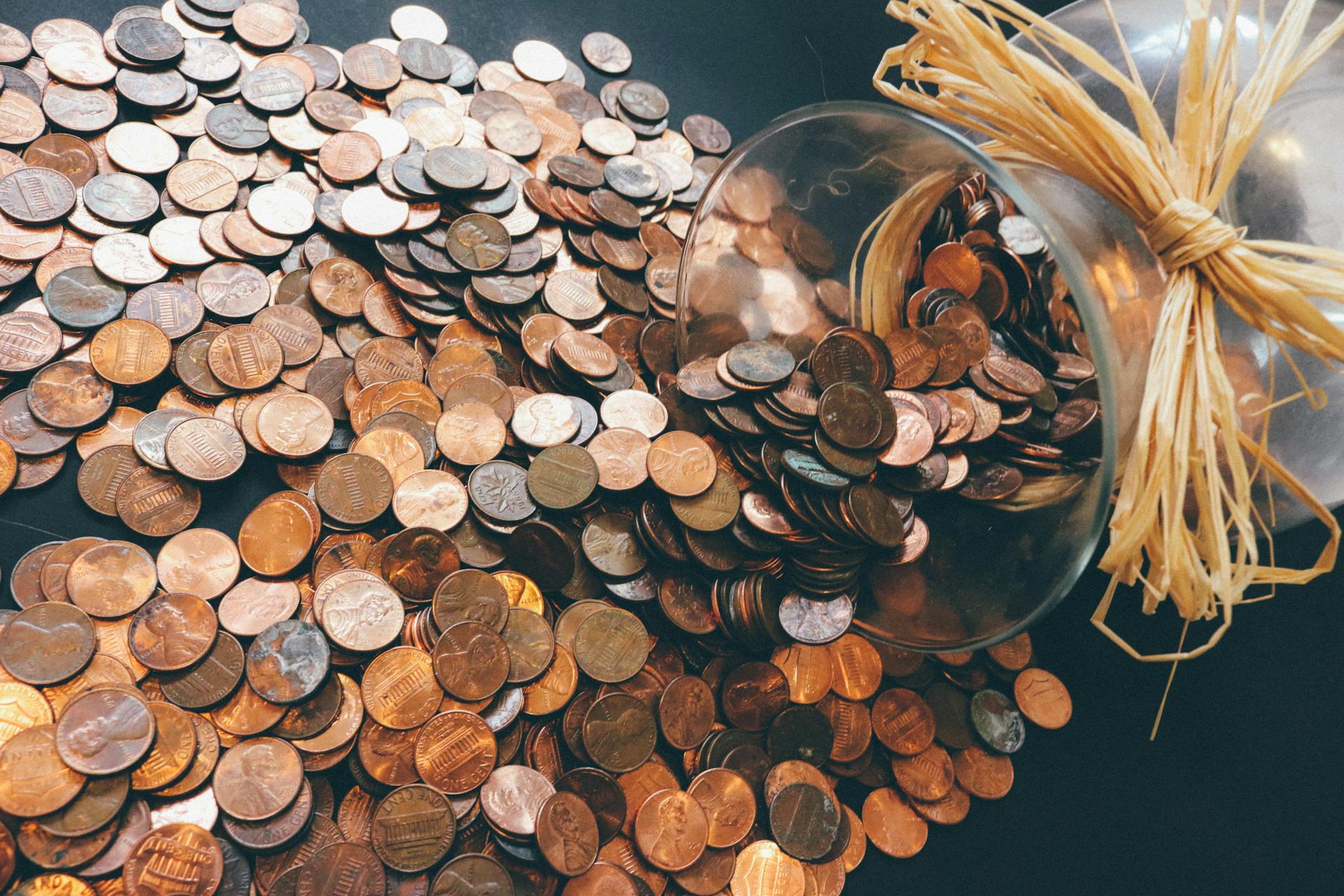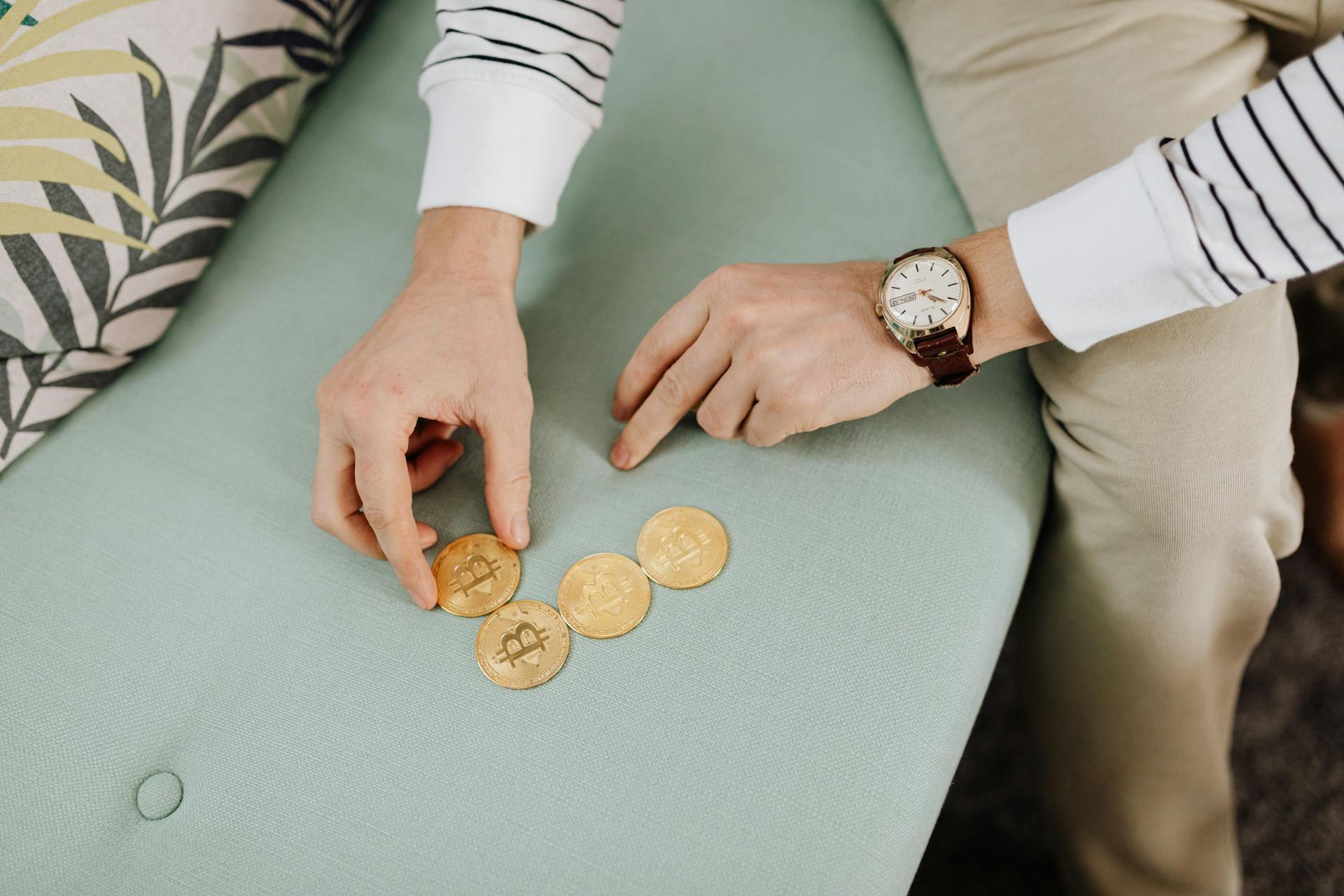
The Peruvian sol, the official currency of Peru, is divided into 100 centimos. It's a widely accepted and used currency, especially for everyday transactions.
You'll often see prices listed in soles, with the exchange rate fluctuating depending on the current market value. This can affect the cost of goods and services, so it's essential to stay informed.
The Peruvian sol is issued by the Central Reserve Bank of Peru, which is responsible for maintaining the country's monetary policy. This includes setting interest rates and regulating the money supply.
As of the last update, the exchange rate is approximately 3.5 soles to the US dollar, but this can vary depending on the current market conditions.
History of the Sol
The Peruvian Sol has a rich history that spans over a century. Introduced in 1863, the Sol replaced the Real, the currency of the Spanish conquerors, at a rate of 1 Sol equaling 10 Reales.

The Sol was subdivided into 10 dineros or 100 centavos and pegged to the French franc. Private banks issued Peso banknotes, but they were eventually replaced by paper money denominated in Soles in 1867.
In 1880, the Peruvian Peseta was introduced, but it circulated only until 1882 simultaneously with the Sol. The Peseta was subdivided into 2 Reales. 5 Pesetas equaled 1 Sol, or 1 Peseta was worth 20 centavos.
Here's a brief timeline of the Sol's evolution:
- 1863: The Sol is introduced, replacing the Real at a rate of 1 Sol = 10 Reales.
- 1867: Peso banknotes are replaced by paper money denominated in Soles.
- 1880: The Peruvian Peseta is introduced, but it circulates only until 1882.
- 1991: The Nuevo Sol is introduced, replacing the Inti at an exchange rate of a million to one.
Sol, 1863-1934
The Peruvian Sol, introduced in 1863, replaced the Spanish Real, the currency of the conquerors, at a rate of 1 Sol equaling 10 Reales. This marked a significant change in Peru's monetary system.
The Sol was subdivided into 10 dineros or 100 centavos, and it was pegged to the French franc. This pegging was a notable aspect of the Sol's design.
In 1867, paper money denominated in Soles replaced Peso banknotes issued by private banks. This change was likely a response to the need for a standardized currency.

The Peruvian Peseta was introduced in 1880, but it circulated for only two years, until 1882. The Peseta was subdivided into 2 Reales, with 5 Pesetas equaling 1 Sol, or 1 Peseta worth 20 centavos.
The Inca, another currency unit, was introduced for banknotes only in 1881. It was subdivided into 10 reales de inca or 100 centavos de inca, with 1 Inca worth 10 Soles.
Here's a quick summary of the Sol's denominations during this period:
The Sol's design was influenced by its pegging to the French franc, and its denominations reflect this.
Early Republican Systems (1821-1863)
Peru's early Republican times saw a lot of change in its monetary systems. A provisional coinage was introduced in 1821 with denominations of ¼ Real, ⅛ and ¼ Peso, and 8 Reales, but these coins were minted in copper instead of silver.
The Bank of Emancipation was established in 1822, issuing paper money for 2 and 4 Reales and 1 Peso. However, this was short-lived as the bank was closed in 1823.

From 1836 to 1839, Peru was part of the Peru-Bolivia Confederation, and two separate republics, North Peru and South Peru, issued their own coins. North Peru had coins with denominations of ½, 1, and 8 Reales, as well as ½, 1, 2, 4, and 8 Escudos.
South Peru, on the other hand, had coins with denominations of ½, 2, 4, and 8 Reales, and ½, 1, and 8 Escudos.
Check this out: Monetary Unit in South Africa
Nuevo Sol and Sol (1991–)
The Nuevo Sol was introduced in 1991, replacing the Inti at an exchange rate of a million to one. This new currency was subdivided into 100 centimos.
Coins were issued for 1, 5, 10, 20, and 50 centimos, as well as 1, 2, and 5 Nuevo Sol. Banknotes were introduced for 10, 20, 50, 100, and 200 Nuevo Sol.
In 2015, the Nuevo Sol was renamed to simply Sol, but the denominations and international code PEN remained the same. The new Sol coins with the correct currency name were introduced in 2016.
Here's a brief overview of the current Peruvian currencies:
- Nuevo Sol (1991-2015): subdivided into 100 centimos, with coins and banknotes in circulation
- Sol (2015-present): subdivided into 100 centimos, with new coins and banknotes introduced, replacing the Nuevo Sol name
The Nuevo Sol and Sol are both legal tender and circulate simultaneously.
What Is the Sol?
The Sol is the national currency of Peru. It's a widely accepted form of payment in the country.
The Peruvian Sol, or PEN, has a long history, going into circulation in January 1991 under the name Nuevo Sol. This name change occurred on December 15, 2015, when the monetary unit was officially renamed Sol.
What Is the?
The Peruvian sol is the national currency of Peru. It's a name you'll hear a lot when traveling to the country.
The Peruvian sol went into circulation in January 1991. This marked a significant change for the country's economy.
It was initially called the Nuevo Sol, but a law changed its name to Sol on December 15, 2015.
South America: A Symbol of Identity
The sol is a cornerstone of daily life in Peru, a country where the currency is deeply rooted in its rich history and culture.

From its colorful banknotes to its symbolic coins, the sol is a reflection of the country's unique identity.
Peru's currency is more than just a means of exchange, it's a symbol of the country's fascinating culture.
Whether you're planning a trip or just curious about Peru, understanding its currency is a key step in exploring this captivating country.
Are you ready to explore Peru with soles in your pocket?
Using the Sol
The sol is the official currency of Peru, and it's widely used across the country. You can exchange your money for soles at authorized exchange houses or banks, or use ATMs to withdraw soles directly from your bank account.
You'll find ATMs in almost every city, and they're a convenient option for getting cash. However, be aware of the fees your bank may charge for international transactions. Some ATMs even dispense US dollars, but the exchange rate can vary.
Credit and debit cards are widely accepted at most tourist establishments, hotels, and restaurants, but it's always handy to have some cash, especially in rural areas. In fact, many prices are listed in soles, so paying in dollars might result in an unfavorable exchange or a change in soles.
Exchanging money in Peru is pretty straightforward, especially in tourist areas and city centers. However, refrain from exchanging money on the street, as it's not safe to handle cash in crowded places.
Here are some common denominations of soles and their equivalent values in US dollars:
Keep in mind that the exchange rate can fluctuate, and it's always a good idea to check the current rate before making a transaction.
Counterfeit Money
Counterfeit money is a common issue in Peru, especially with the Nuevo Sol and US Dollar. It's not always easy to spot a counterfeit bill or coin.
Be vigilant when receiving money, as counterfeit bills and coins are common. Merchants and consumers take the time to verify the authenticity of money before accepting payment or change.
To verify money in Peru, hold the bill up to the light to see the watermark. If you're unsure, ask for the bill or coin to be exchanged.
For another approach, see: Brazil Real Coin
New banknotes introduced in 2011 have international security measures and figures from Peru's rich cultural history. However, it's still essential to be cautious.
To avoid issues with counterfeit bills, exchange money at authorized exchange houses or banks. Airports also offer exchange services, but at less favorable rates.
ATMs are available in most cities, allowing you to withdraw soles directly from your bank account. Be aware of the fees your bank may charge.
Peruvian soles come in denominations of 10, 20, 50, 100, and 200 soles. The 200 soles note is the least common and sometimes not accepted.
To identify a counterfeit bill, compare its texture with an authentic one. Check for details like watermarks, hidden figures that only appear when held up to the light, and the security strip, which should change color depending on the light and angle.
Here are some key differences to look out for:
- Texture: Compare the texture of the bill to an authentic one.
- Watermarks: Check for well-defined lines and borders on the images.
- Security strip: The security strip should change color depending on the light and angle.
While counterfeit money is a common issue, it doesn't mean it will happen to you. If you notice anything unusual, don't hesitate to ask for a different bill.
Sol Banknotes and Coins
The Peruvian Sol has undergone several changes over the years, but one thing remains constant: its use of banknotes and coins. Today, you can find banknotes in denominations of 10, 20, 50, 100, and 200 soles.
Each note features important historical figures and iconic landscapes, making them a great way to learn about Peruvian culture. The 10, 20, and 50 céntimos coins, as well as the 1, 2, and 5 soles coins, are also in circulation and feature cultural and natural symbols.
Here's a breakdown of the current Sol banknotes and coins:
The Nuevo Sol was introduced in 1991, replacing the Inti, and was later renamed to Sol in 2015. Despite the name change, the denominations and international code PEN remained the same.
Libra de Oro
The Libra de Oro was a currency used in Peru from 1898 to 1930, pegged to the British Pound. It was introduced to circulate alongside the Sol coins and banknotes.
The Libra de Oro was issued in the form of gold coins and bearer cheques, with denominations ranging from 1⁄5 libra to 10 libras. These notes were initially issued by private banks, but later the Peruvian Central Reserve Bank took over production.
One Libra equaled 10 Soles, and the standard was based on the British sovereign, a gold coin with a nominal value of one pound sterling. The Libra de Oro was eventually replaced by the Sol de Oro in 1922, but it's interesting to note that the Sol coins were also gradually replaced by Sol de Oro coins from the 1930s.
Here's a brief timeline of the Libra de Oro's existence:
- 1898: Introduced, pegged to the British Pound
- 1922: Replaced by the Sol de Oro
- 1930: Officially discontinued
The Libra de Oro's legacy is an interesting footnote in Peru's monetary history, and it's fascinating to see how the country's currency has evolved over time.
Sol Banknotes and Coins
The Sol banknotes and coins are an interesting topic. Today, the Sol comes in a variety of banknotes and coins. The banknotes include 10, 20, 50, 100, and 200 soles, featuring important historical figures and iconic landscapes.
Each Sol banknote has a unique design, but they all share the same denominations. The coins in circulation include 10, 20, and 50 centimos and 1, 2, and 5 soles.
The Sol coins feature cultural and natural symbols, such as the vicuña and the potato. The Sol banknotes and coins are both legal tender and circulate simultaneously.
Here's a breakdown of the Sol banknotes and coins:
- Banknotes: 10, 20, 50, 100, and 200 soles
- Coin denominations: 10, 20, and 50 centimos and 1, 2, and 5 soles
- Cultural symbols: vicuña and potato
The Sol has undergone some changes over the years, but it remains a stable currency with a moderate inflation rate.
Commemorative
Commemorative currency in Peru is a unique way to celebrate historical events and cultural heritage. It's a great way to take home a souvenir that's both meaningful and collectible.
Peru issues commemorative coins that are highly valued by collectors. These coins can be a fun and educational way to learn about Peruvian history and culture.
Collectors highly value these coins, which makes them a great investment opportunity for those interested in numismatics.
Readers also liked: United Debt Collectors
Coins
Coins were introduced in Peru in 1985, featuring Navy Admiral Miguel Grau. They came in denominations of 1, 5, 10, 20, and 50 centimos, plus 1 and 5 intis.
The 1 céntimo coin was issued only in 1985, making it a rare find. All other denominations, except for the 5 céntimo coins, were issued until 1988.
Coins featured Navy Admiral Miguel Grau on the reverse and Inti on the obverse. This design was consistent across all coin denominations.
Commemorative currency in Peru celebrates historical events and cultural heritage, making it a great souvenir for visitors. These coins are highly valued by collectors.
Featured Images: pexels.com


